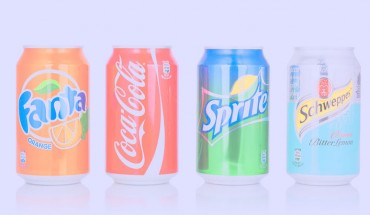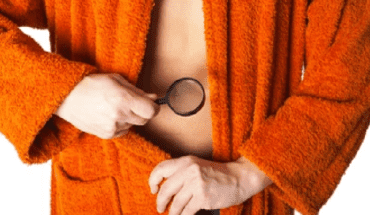The Which? Guide to Complementary Medicine, which I wrote, was published in 1997. In the same year, Dorling Kindersley brought out the Encyclopedia of Complementary Medicine and three years later The Complete Guide to Integrated Medicine. I was writing about complementary and alternative medicine (CAM), my colleagues were writing about it and the papers couldn’t get enough of it. The Sunday Times even produced a four-part A-Z of Chinese Medicine complementing the six-part A-Z Guide to Complementary Medicine, published in The Times across six Saturdays from 7 February to 14 March 1998. It was definitely a thing.
And now? Put “consumers guide to alternative medicine” into Google and a book with this title, published in 1992, pops up. Change “alternative” to “complementary” and The Which? Guide is at the top. A deeper search unearths plenty of guides for health professionals – I recommend The Desktop Guide to Complementary and Alternative Medicine by Prof Edzard Ernst1. – and mountains of books extolling the virtues of complementary medicine, plus a growing number that calls alternative medicine to account.
Yet, there are few, if any, accessible guides, laying out the science behind these therapies in simple language to a lay audience, and clearly answering the question that I put nearly 20 years ago – is x, y or z going to do my condition/ailment any good? Or is it a complete waste of my time, money – and hope?
Yet, such a guide is needed more than ever – if only to warn consumers about the myriad of expensive “therapies” for which there is little or no evidence. Homeopathy has been shown over and over again to be little more than a placebo.The latest nail in its coffin was the results of a systematic review by a working party of the National Health and Medical Research Council of the evidence from 176 trials of homeopathy, which concluded that it was no more effective than placebo. Its chair, Professor Paul Glasziou, an academic in evidence based medicine at Bond University, Australia, said homeopathy was a “therapeutic dead-end”.
Last month, the National Institute for Health and Care Excellence (Nice) issued new guidelines that acupuncture should no longer be used to treat lower back pain following a review of scientific evidence that showed it was no better than placebo. The list goes on, with some therapies and practices having a bit more evidence to back them than others. But it is worth remembering that no complementary or alternative therapy can actually cure a full-blown disease.
But despite this paucity of evidence, consumers continue to embrace complementary and alternative medicine, which continues to thrive. The total UK annual spend on CAM treatments is £4.5 billion (Mintel report, 2009). Between 2011-2016 the number of consumers using CAM treatments was estimated to grow by 60 per cent and the number of CAM practitioners by 30 per cent (British Lifestyles Report, Mintel, 2011). Many people move between mainstream medicine and complementary therapies, supplementing antibiotics with spiritual healing and chemotherapy with reiki.
This is fine – there is plenty of anecdotal evidence that the softer therapies, such a reiki, massage, aromatherapy and reflexology can support you through treatment, such as chemotherapy, or simply relax you. Complementary therapists give consumers that precious ingredient – time. Evidence is growing that the relationship between the patient and doctor/practitioner is more powerful than previously thought. Some academics postulate that the “unique drama” of CAM therapies may have “enhanced” the placebo effect in particular conditions 2. – even if those conditions might have cleared up in time and probably around the same time as the patient/consumer decided to try herbal medicine/acupuncture/homeopathy.
And then there is the power of the anecdote, the personal story that friends tell about how a particular therapy alleviated their symptoms. Scientists poo-poo such personal anecdotes, but journalists know their power. So, despite the lack of evidence, consumers are still hungry for complementary and alternative therapies and, as such, need guides, written for a lay audience, outlining clearly the evidence for specific therapies.
For among the potpourri of modalities, there needs to be a delineation of what may be effective and has been accepted by mainstream medicine (clinical hypnotherapy, some herbal medicine, massage therapy) and what fails to work or can be dangerous – and what is, frankly, silly (distance healing, angel therapy). Consumers need to be reminded that charlatans, peddling their products, ill-informed or dangerous advice and bizarre diagnostic techniques, can flourish in an unregulated billion pound industry.
I have interviewed many clinicians who welcome the use of complementary and alternative medicine in their clinics to support (and occasionally treat) their patients and some, like leading breast surgeon Michael Baum, who would embrace any promising treatment that might one day emerge from an alternative therapy, should it be scientifically proven to be efficacious 3. Many understand CAM’s role in palliative care and the spiritual support it may provide.
So let’s give consumer the tools to make an informed choice.
- Ernst, E., Pittler, M.H., Wider, B. and Boddy, K. (2006) The Desktop Guide to Complementary and Alternative Medicine, 2nd ed, Edinburgh, Elsevier Mosby
- Eisenberg, D., and Kaptchuk, T. J. (2002) ‘The Placebo Effect in Alternative Medicine: can Performance of Healing Ritual Have Clinical Significance?’ Complementary and Alternative Medicine Series. Annals of Internal Medicine, Vol 136, 817-825
- Baum, M. (2009) ‘Complementary and alternative medicine (CAM) and cancer: The ugly face of alternative medicine’ International Journal of Surgery, Vol. 7, 409–412
- Why we need consumer guides for complementary and alternative medicine - 18th April 2016






